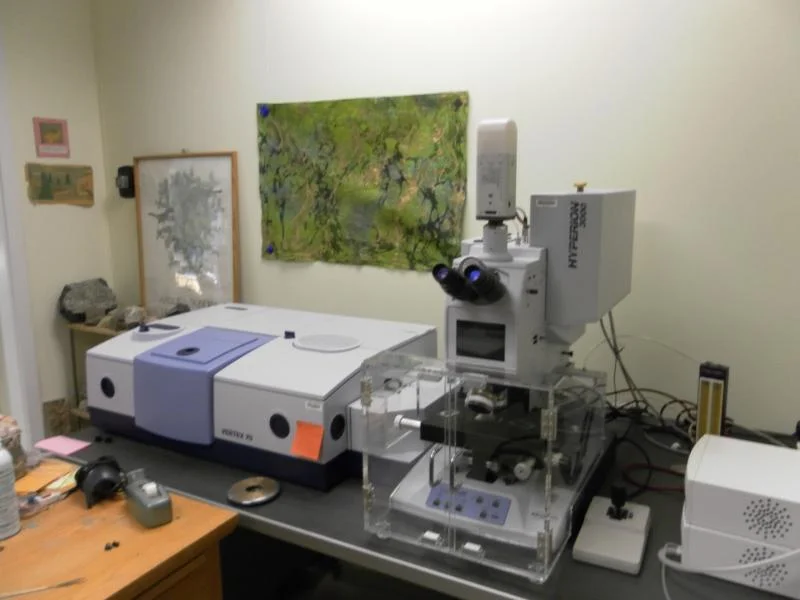FTIR Spectroscopy for Beginners: 9 Tips for Success
Infrared spectroscopy, commonly referred to as FTIR, has become one of the most important analytical tools in quality control and research today. At first, glance, using an FTIR spectrometer can seem intimidating, but if you keep these tips in mind you’ll be using your instrument in no time. Let’s look at these tips for success with your Agilent FTIR spectroscopy instruments.
What is an FTIR?
Infrared spectroscopy is a scientific technique used to find out what elements are present in a sample of some kind (organic, biological, etc.) It involves shining light with a specific wavelength onto that sample. The light can either be reflected or transmitted through (or both) and depending on what frequency range it occurs at, certain materials will absorb at that frequency while others will not.
This information can then be turned into an IR spectrum which shows which materials are present in your sample and also how concentrated they are. Knowing these two things (what’s there and how much of it) provides critical information about your sample so you can make meaningful conclusions about it. What does it tell you?
Wavelengths
The wavelength of light is used to identify elements, similar to how a fingerprint is used in forensics. Each element absorbs different wavelengths and reflects others, creating an absorption pattern. The spectrum created from absorbing different wavelengths at different intensities will allow you to determine what elements are present in your sample.
Wavelengths can be measured in nanometers (nm) or micrometers (μm). Most FTIR instruments have a resolution of 5-10 nm. So although some spectra appear quite complex, it’s still possible to pick out one or two key features when comparing against reference spectra.
The Importance of Narrow Bands and Broad Bands
For a reflectance IR spectrum to be useful, each bond must absorb at a different frequency. If you are analyzing a mixture of hydrocarbons and you cannot tell which carbon bonds are where then your spectrum will not help you.
It is because of this reason that FTIR instruments have either narrow or broad bands; to get good resolution between spectra for different molecules.
Realize All Samples Are Different
Although infrared spectroscopy analysis can be performed on a wide range of samples, it is important to remember that all samples are different. The sample will affect what types of results you get and how reliable they are.
For example, if you are using FTIR spectrometry to analyze synthetic chemicals, you won’t be able to rely on similar response factors as when analyzing plant leaves. Instead, you will need to develop a set of rules specific to that sample to obtain consistent results over time.
Calibration is Important
When using an FTIR, a small sample size is placed under a source. The infrared light reflects off of your sample and back to a detector. For that reflection to be accurate, however, your source has to be at exactly 940°C (1,760°F).
That may seem simple, but to avoid any variables with temperature shifts and avoid having your instrument get thrown out of calibration constantly, it’s important to calibrate regularly. If you notice problems with accuracy like not being able to detect every single peak on your sample or only picking up on certain peaks calibrate immediately.
Try Something New
The key to getting started with your FT-IR spectroscopy instrument is identifying which of its functions you’ll need. While many are familiar with infrared instruments, it’s important to remember that IR spectra show a lot more than just molecular structure—they can also reveal thermal properties and material distribution.
If you’re starting from scratch, it’s best to try as many features as possible during your first month or two with your IR instrument to get a feel for what works best under different circumstances. For example, if you have an adhesive failure somewhere on a product line, performing a functional test that shows where exactly adhesive problems are likely to occur can help identify specific areas of concern.
Consider Your Experimental Layout
For an FT-IR spectrometer to accurately determine sample composition, it needs to be able to scan a sample at high resolution. To do that, all of your samples should be arranged as similarly as possible. Place samples with different thicknesses on top of one another and they’ll scatter light differently than they would if you placed them side by side.
Likewise, don’t mix different types of materials in one vial; otherwise, you won’t get a consistent analysis across them all. Make sure you know how far apart your samples need to be from one another before they can be scanned by your infrared spectrometer and make sure they are all lined up perfectly beforehand.
Take Good Quality Measurements
If you’re trying to take accurate readings with an FTIR instrument, there are a few things that can help. First and foremost, make sure your measurement is taken in an appropriate environment. Many instruments require a chamber of constant temperature and pressure, which will ensure your sample remains consistent from one moment to another.
Other instruments may be more forgiving, but if you want to be sure about what you’re reading, measure in a controlled environment first; once you have everything calibrated, it won’t matter whether or not your sample goes up or down ten degrees as long as it is inside your chamber/instrument.
Don’t Forget About Data Presentation
One of the last things you want to do as a chemist is forgotten about data presentation. If you present your data in an unintelligible or unappealing way, people will not care about it. It’s worth taking some time to prepare visually appealing figures and tables that effectively communicate information.
Add graphs, charts, and diagrams to supplement your text if necessary. Other effective ways to present scientific information include oral presentations and posters displayed at conferences or other events.
Conclusion
While you may not have used Agilent FTIR spectroscopy instruments before, don’t worry you’ll be off and running in no time! Just keep these tips in mind as you work with your IR equipment and everything should go smoothly. If you have any questions, be sure to contact your instrument supplier. It’s always better to ask a question than jump into something unknowingly.







